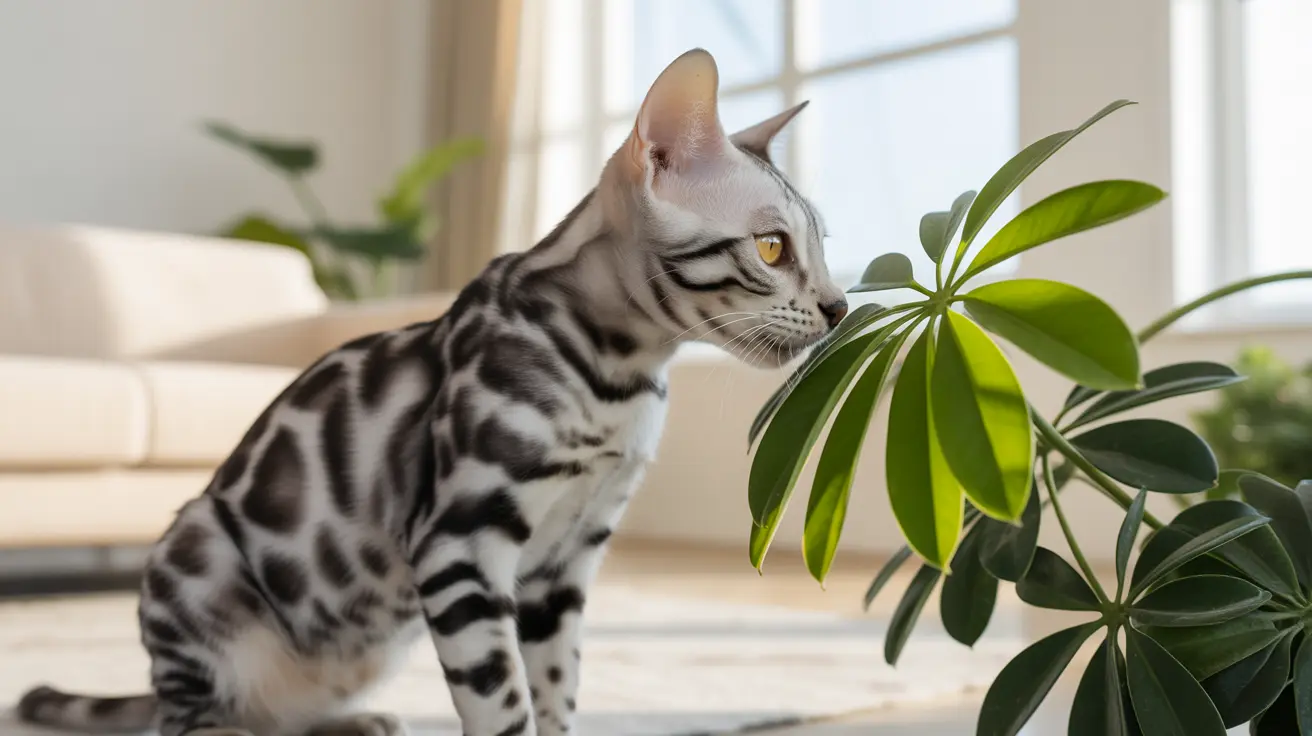As a cat owner, knowing which houseplants pose risks to your feline friend is crucial for maintaining their safety. Umbrella plants, while popular home decorations, can be potentially dangerous to cats depending on the specific species. This comprehensive guide will help you understand the risks, identify toxic varieties, and know what to do if your cat encounters these plants.
It's important to note that the term "umbrella plant" can refer to different species, each with varying levels of toxicity. Let's explore the key differences and what you need to know to keep your cat safe.
Different Types of Umbrella Plants and Their Toxicity Levels
The two main types of plants commonly called "umbrella plants" have very different safety profiles:
Eriogonum umbellatum (Safe Variety)
This variety, also known as sulphur-flower buckwheat, is generally considered non-toxic to cats. However, even non-toxic plants can cause mild digestive upset if ingested, simply because cats aren't designed to digest large amounts of plant material.
Schefflera (Toxic Variety)
The Schefflera species, commonly known as umbrella tree or octopus tree, contains harmful compounds that can be dangerous to cats. These plants contain calcium oxalate crystals and other toxic substances that can cause immediate and severe reactions.
Understanding the Dangers of Toxic Umbrella Plants
When cats encounter toxic umbrella plants like Schefflera, several harmful compounds can affect them:
- Calcium oxalate crystals
- Terpenoids
- Saponins
These substances can cause both immediate and ongoing health issues for your cat.
Signs of Umbrella Plant Poisoning in Cats
If your cat has ingested a toxic umbrella plant, watch for these symptoms:
- Immediate oral irritation and drooling
- Pawing at the mouth
- Vomiting and diarrhea
- Difficulty swallowing
- Loss of appetite
- Lethargy
- In severe cases, breathing difficulties
Emergency Response and Treatment
If you suspect your cat has ingested parts of a toxic umbrella plant, take these immediate steps:
- Remove any plant material from your cat's mouth if possible
- Contact your veterinarian immediately
- Collect a sample of the plant for identification
- Monitor your cat's symptoms
- Don't induce vomiting unless specifically instructed by a professional
Prevention and Safe Alternatives
The best way to protect your cat is through prevention:
- Remove toxic umbrella plants from your home
- Choose pet-safe alternatives like spider plants or Boston ferns
- Create designated plant areas that cats cannot access
- Use deterrent sprays around plants
- Provide cat-friendly plants like cat grass
Frequently Asked Questions
Is the umbrella plant toxic to cats, and what are the symptoms if my cat eats it?
Yes, the Schefflera umbrella plant is toxic to cats. Symptoms include oral irritation, excessive drooling, vomiting, difficulty swallowing, and in severe cases, respiratory issues.
What's the difference between Eriogonum umbellatum and Schefflera—which umbrella plants are safe for cats?
Eriogonum umbellatum is generally safe for cats, while Schefflera is toxic. The key is to properly identify which species you have, as they can look similar but have very different safety profiles.
What should I do if my cat has chewed or eaten part of a Schefflera (umbrella) plant?
Immediately contact your veterinarian or the ASPCA Animal Poison Control Center. Remove any remaining plant material from your cat's mouth and bring a sample of the plant for identification.
How do I keep my cat safe from toxic houseplants like the Schefflera?
Remove toxic plants from your home or place them in completely inaccessible areas. Consider replacing them with cat-safe alternatives and provide appropriate deterrents if necessary.
Are there long-term effects on my cat's health after eating a toxic umbrella plant?
While most cases resolve with prompt treatment, severe poisoning can lead to lasting kidney damage or respiratory issues. Always seek immediate veterinary care to prevent long-term complications.
Remember, when it comes to your cat's safety, it's better to err on the side of caution. If you're unsure about a plant's safety, consult with your veterinarian or remove it from your home entirely.






